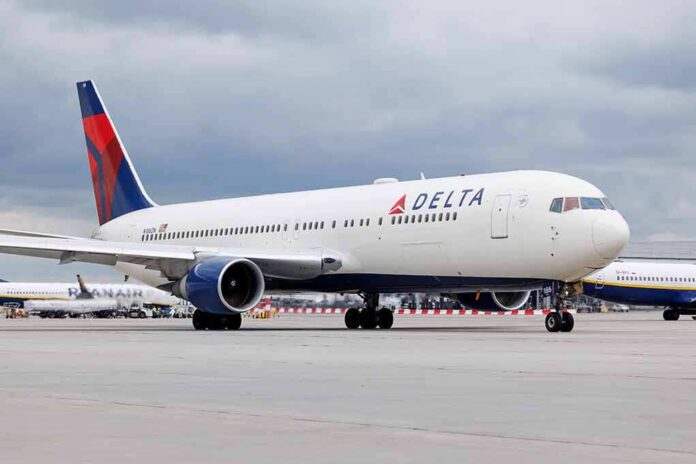
On a cold December day, a Delta plane crash-landed at Toronto Pearson Airport, highlighting serious concerns about aviation safety in harsh weather.
Quick Takes
- A Delta flight from Minneapolis crash-landed at Toronto Pearson Airport, overturned, but astonishingly resulted in no fatalities.
- 18 passengers sustained injuries with three in critical condition amidst severe weather conditions that led to the crash.
- Investigations are underway by the Transportation Safety Board of Canada to determine the causes behind this alarming incident.
- This incident has sparked discussions on improving aviation safety protocols and infrastructure in extreme weather conditions.
Incident Overview
The Delta flight CRJ-900, en route from Minneapolis, experienced a terrifying crash at Toronto’s Pearson Airport on February 17, 2025. Upon landing, the aircraft overturned, impacted by severe weather conditions including high winds and drifting snow. Firefighters and emergency personnel rapidly responded, ensuring all 80 passengers were safely evacuated despite the harrowing situation. The plane, operated by Delta’s Endeavor Air, came to rest upside down on the snow-covered runway.
Rather remarkably, this serious incident resulted in no fatalities, though 18 passengers were injured, with three facing critical injuries. Quick actions by emergency teams provided prompt medical care, transporting those harmed to nearby hospitals. The Transportation Safety Board of Canada has initiated an inquiry to scrutinize the causal factors, including the challenging weather conditions attributed to this distressing flip-over incident.
Discussion on Safety Protocols
The crash has intensified conversations surrounding flight safety and the efficacy of existing protocols in handling adverse weather. Aviation expert Cox remarked that while the CRJ-900 is regarded as reliable, instances of planes inverting are exceptionally rare. This has prompted calls for scrutinizing weather-related decision-making processes and landing permissions.
The Delta flight was cleared to land despite adverse conditions, with the control tower warning of potential airflow disruptions during the approach. As investigations continue, the aviation community looks towards developing new strategies to bolster air travel safety in inhospitable climates. The cause of this catastrophe symbolizes a pressing need for comprehensive safety reforms and infrastructure enhancements at airports susceptible to extreme weather.
Broader Implications
With this incident being part of a series of troubling aviation accidents in North America, broader implications for air safety protocols are surfacing. Other recent accidents, including a midair collision in Washington and a crash in Alaska, signify an urgent need for revisiting air traffic control and safety measures. Meanwhile, the Transportation Safety Board of Canada aims to pinpoint the underpinning causes and provide improvements to avoid future mishaps.
Officials are urged to re-evaluate the resilience of current systems, taking steps towards fortifying aviation safety in all conceivable weather phenomena. The findings from this investigation and subsequent policy shifts have the potential to redefine aviation safety regulations not only in Canada but across the broader region.
Sources:
- Toronto plane crash: Harrowing video shows Delta plane erupting into fireball, flipping upside-down – Fox News
- Delta jet flips upside down on a snowy Toronto runway and all 80 aboard survive | AP News
- A Delta Plane Crashes in Toronto, but Tragedy Is Averted – The New York Times












